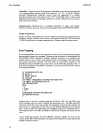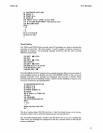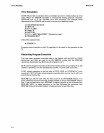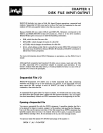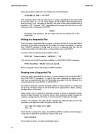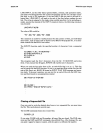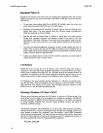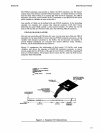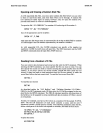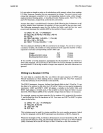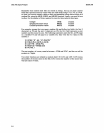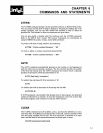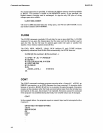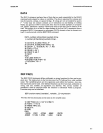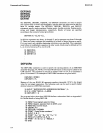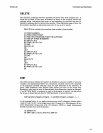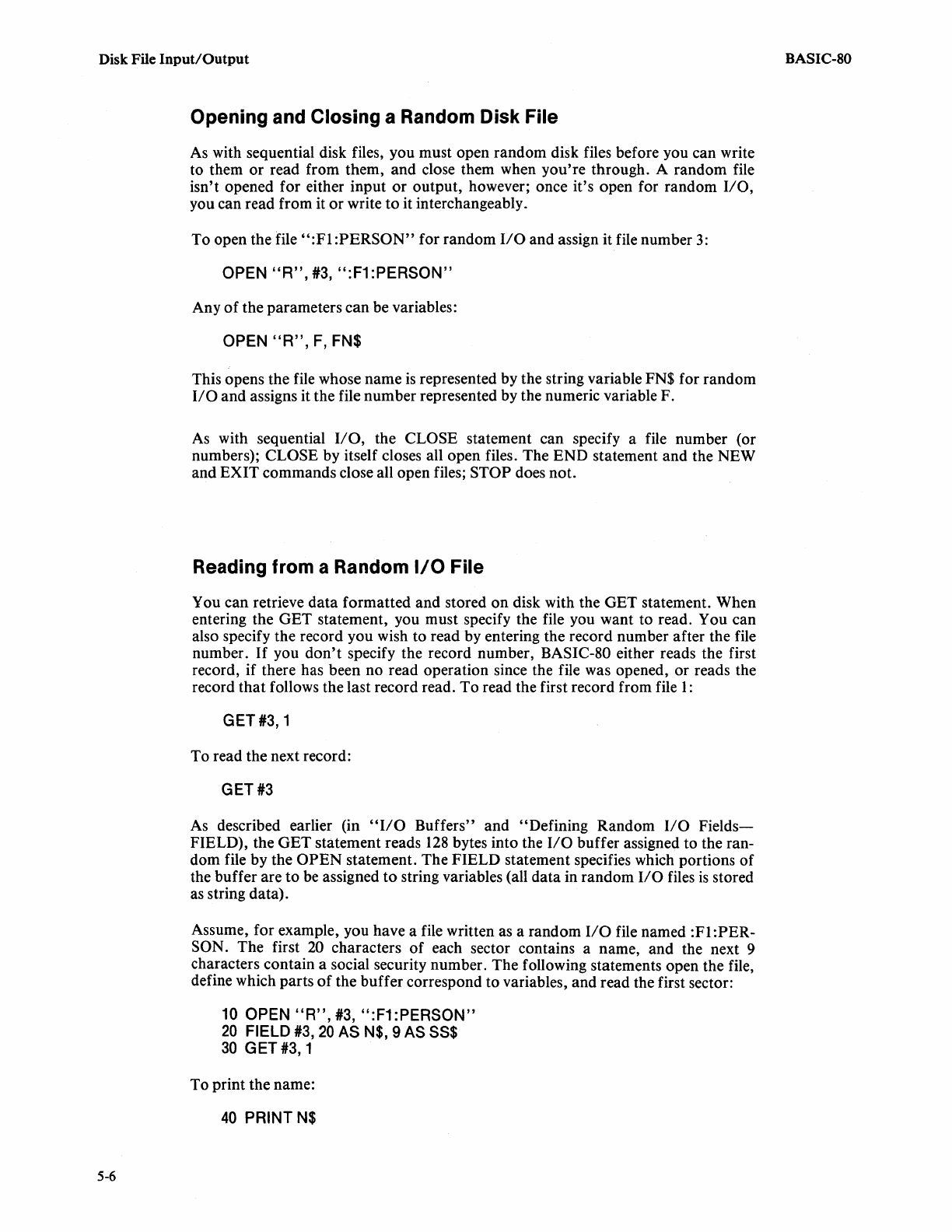
Disk File Input/Output
5-6
Opening and Closing a Random Disk File
As
with sequential disk files, you must open random disk files before you can write
to them
or
read from them, and close them when you're through. A random file
isn't opened for either input
or
output, however; once it's open for random
I/O,
you can read from
it
or
write
to
it interchangeably.
To open the
file
":FI
:PERSON"
for random
110
and assign it file number
3:
OPEN
"R",
#3,
":F1 :PERSON"
Any
of
the parameters can be variables:
OPEN
"R",
F,
FN$
This opens the file whose name
is
represented by the string variable FN$ for random
I/O
and assigns it the file number represented by the numeric variable F.
As
with sequential
I/O,
the CLOSE statement can specify a file number (or
numbers);
CLOSE by itself closes all open files. The END statement and the NEW
and EXIT commands close all open files;
STOP does not.
Reading from a Random
1/0
File
You can retrieve
data
formatted and stored on disk with the GET statement. When
entering the GET statement, you must specify the file you want to read.
You can
also specify the record you wish to read by entering the record number after the file
number.
If
you
don't
specify the record number, BASIC-80 either reads the first
record, if there has been no read operation since the file was opened, or reads the
record that follows the last record read. To read the first record from file I:
GET #3,1
To read the next record:
GET
#3
As
described earlier (in
"110
Buffers" and "Defining Random
110
Fields-
FIELD), the GET statement reads
128
bytes into the
I/O
buffer assigned to the ran-
dom file by the
OPEN statement. The FIELD statement specifies which portions
of
the buffer are to be assigned
to
string variables (all data in random
I/O
files
is
stored
as
string data).
Assume, for example, you have a file written as a random
liD
file named :FI :PER-
SON. The first 20 characters
of
each sector contains a name, and the next 9
characters contain a social security number. The following statements open the file,
define which parts
of
the buffer correspond to variables, and read the first sector:
10
OPEN
"R",
#3,
":F1 :PERSON"
20
FIELD
#3,
20
AS
N$,
9
AS
SS$
30
GET #3,1
To print the name:
40
PRINT
N$
BASIC-SO



